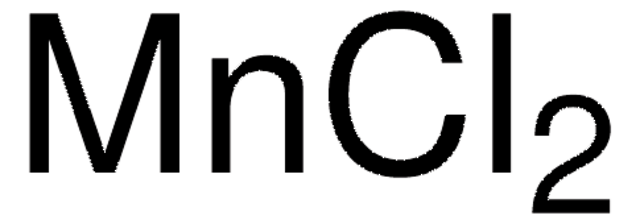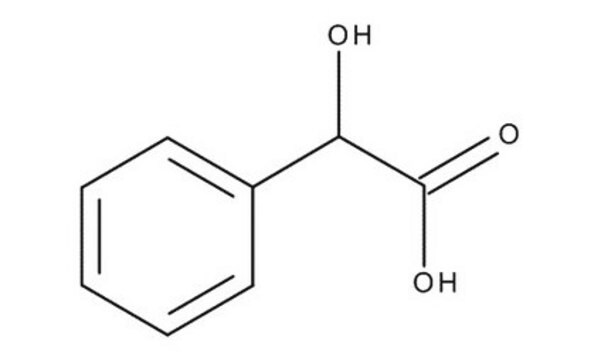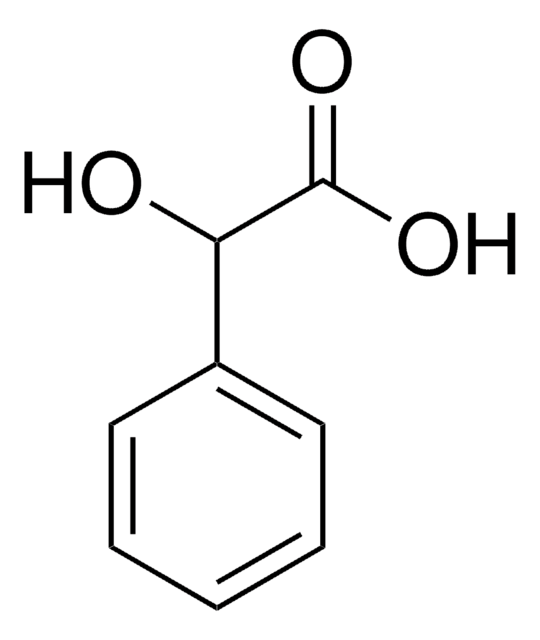48795
Manganese(II) chloride 0.1 M solution
Sinónimos:
Manganese(II) chloride solution, Additive Screening Solution 26/Kit-No 78374
Iniciar sesiónpara Ver la Fijación de precios por contrato y de la organización
About This Item
Fórmula lineal:
MnCl2
Número de CAS:
Peso molecular:
125.84
MDL number:
UNSPSC Code:
12352200
PubChem Substance ID:
NACRES:
NA.32
Productos recomendados
Quality Level
density
1.01 g/mL at 20 °C
storage temp.
2-8°C
SMILES string
Cl[Mn]Cl
InChI
1S/2ClH.Mn/h2*1H;/q;;+2/p-2
InChI key
GLFNIEUTAYBVOC-UHFFFAOYSA-L
¿Está buscando productos similares? Visita Guía de comparación de productos
Application
Manganese(II) chloride 0.1 M solution has been used:
- as a component of reprogramming media for culturing mouse neonatal tail-tip fibroblasts
- in the mutagenesis of WT clone by error-prone polymerase chain reaction (PCR)
- as a standard in isothermal titration calorimetry and differential scanning calorimetry
signalword
Warning
hcodes
Hazard Classifications
Eye Irrit. 2
Storage Class
12 - Non Combustible Liquids
wgk_germany
WGK 1
flash_point_f
Not applicable
flash_point_c
Not applicable
ppe
Eyeshields, Faceshields, Gloves
Elija entre una de las versiones más recientes:
¿Ya tiene este producto?
Encuentre la documentación para los productos que ha comprado recientemente en la Biblioteca de documentos.
Los clientes también vieron
Robert W Siegel
Methods in molecular biology (Clifton, N.J.), 504, 351-383 (2009-01-23)
Many biosensors depend on molecular recognition reagents to achieve highly sensitive and specific detection levels of an analyte of interest. Although new and improved detection platforms continue to be developed, improvements in the affinity and specificity of the molecular recognition
Barry J Bowman et al.
Eukaryotic cell, 11(11), 1362-1370 (2012-09-18)
The pmr gene is predicted to encode a Ca(2+)-ATPase in the secretory pathway. We examined two strains of Neurospora crassa that lacked PMR: the Δpmr strain, in which pmr was completely deleted, and pmr(RIP), in which the gene was extensively
Jerome A Roth et al.
Neurotoxicology, 35, 121-128 (2013-01-15)
Chronic exposure to Mn results in the development of a neurological disorder known as manganism characterized by neurological deficits resembling that seen in Parkinsonism. Although dopaminergic neurons within the nigrostriatal pathway appear intact, Mn-induced irregularities in DA transmission have been
A G Kanthasamy et al.
Toxicology letters, 214(3), 288-295 (2012-09-22)
The role of normal cellular prion protein (PrP) remains to be fully elucidated; however, the protein is crucial for the infection and progression of prion diseases. Recent evidence indicates that PrP is a metalloprotein since the octapeptide repeat sequences in
Xiao-fei Liu et al.
Biological trace element research, 151(2), 217-224 (2012-11-30)
Manganese (Mn) is an essential element required for normal development and reproduction. However, little is known about the reproductive toxicity of Mn in birds. To investigate the Mn-induced toxicity on testicular trace element levels and crucial hormonal parameters on male
Nuestro equipo de científicos tiene experiencia en todas las áreas de investigación: Ciencias de la vida, Ciencia de los materiales, Síntesis química, Cromatografía, Analítica y muchas otras.
Póngase en contacto con el Servicio técnico





